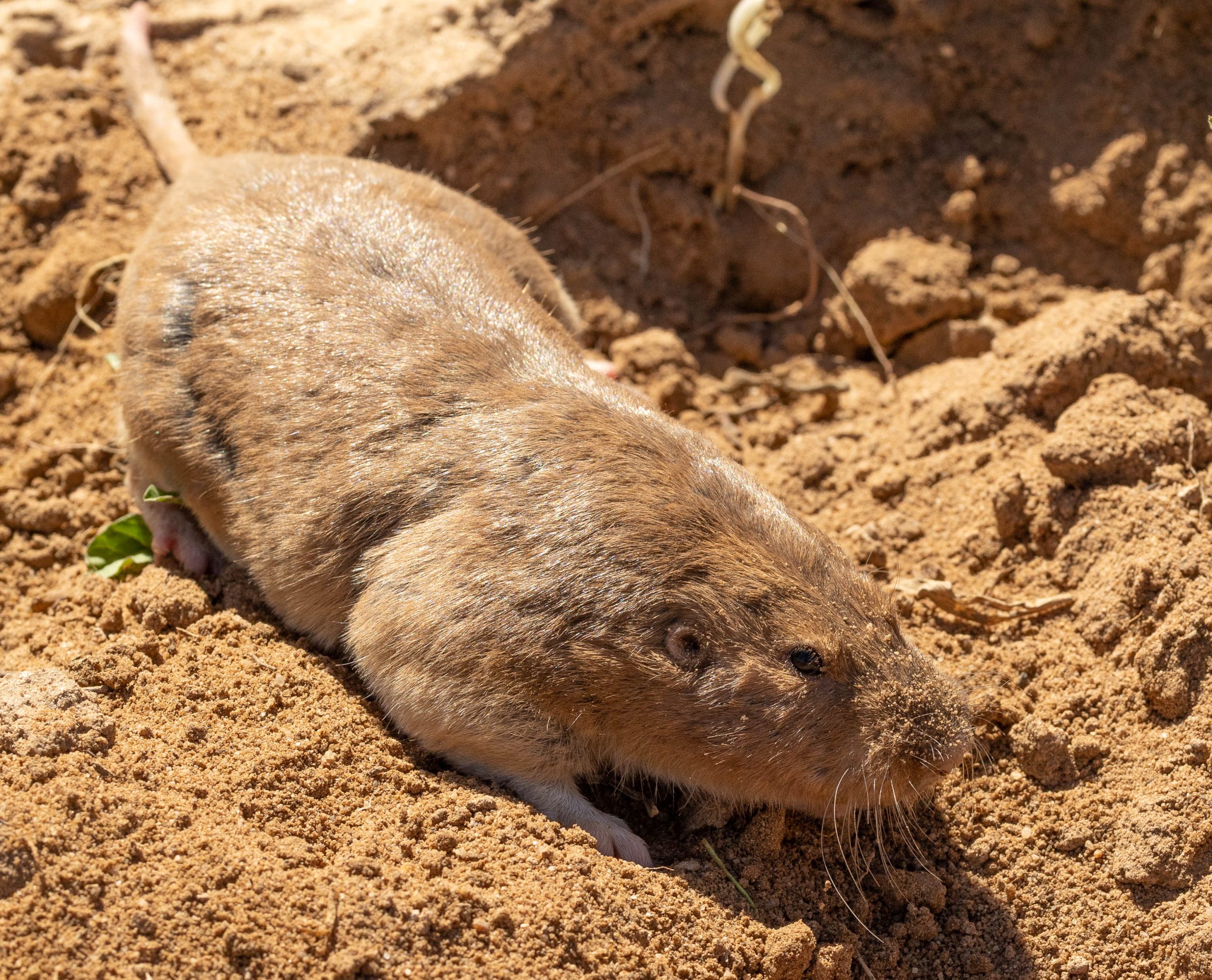
New Report: The Texas Panhandle
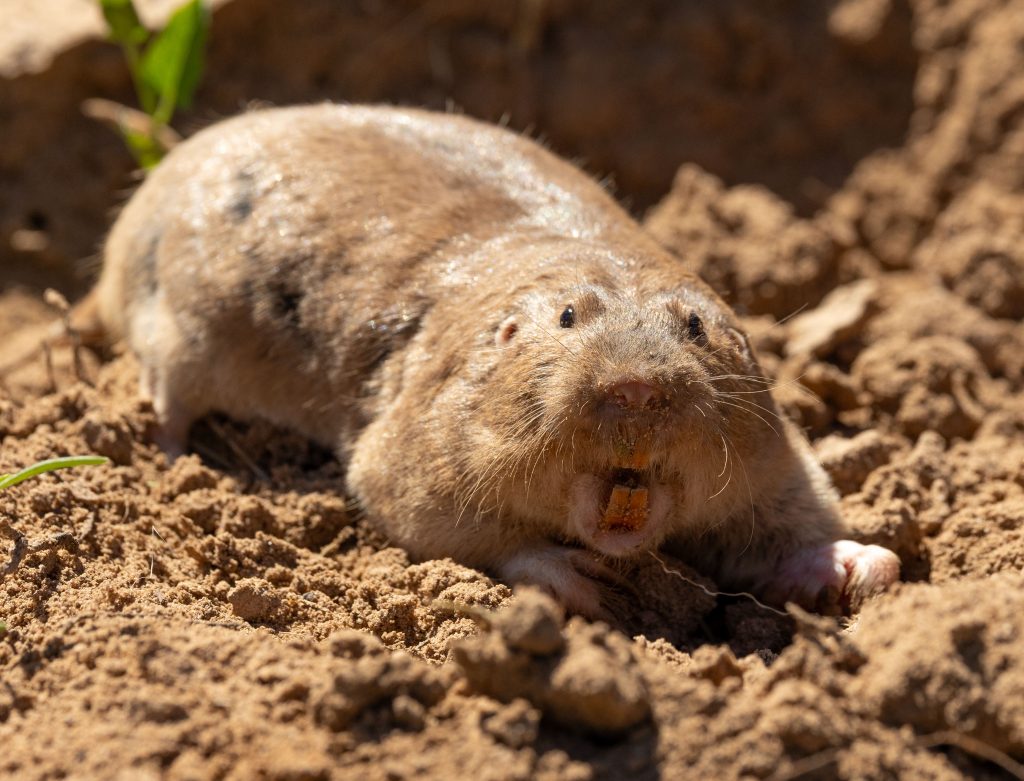
Hall’s Pocket Gopher (Geomys jugossicularis)
I spent last weekend in the Rita Blanca National Grasslands in the far northwest of Texas on a very quick trip with Bob Dowler from San Angelo State University .
I first met Bob in 2014. He’s my kind of mammalogist and loves nothing better than getting into the field to to catch critters. If trapping was a martial art, then Bob would be Black Belt 10th Dan. When he offered in 2014 to show me how to catch a pocket gopher my heart skipped several beats. The rest is history.
Never one to look a gift gopher in the mouth, I had returned to Texas to travel with Bob in 2020, 2021, 2023 and again this month. Yet he still doesn’t seem to be sick of my company.
Bob had given me about 20 lifers over the past decade including nine pocket gopher species.
I had just one Texan gopher left to see: Hall’s Pocket Gopher. Bob hadn’t seen one either so we cooked up a plan to spend a weekend looking for them, and whatever else we could find in the Rita Blanca National Grassland. Bob applied for a permit to survey the area and we were off to the races.
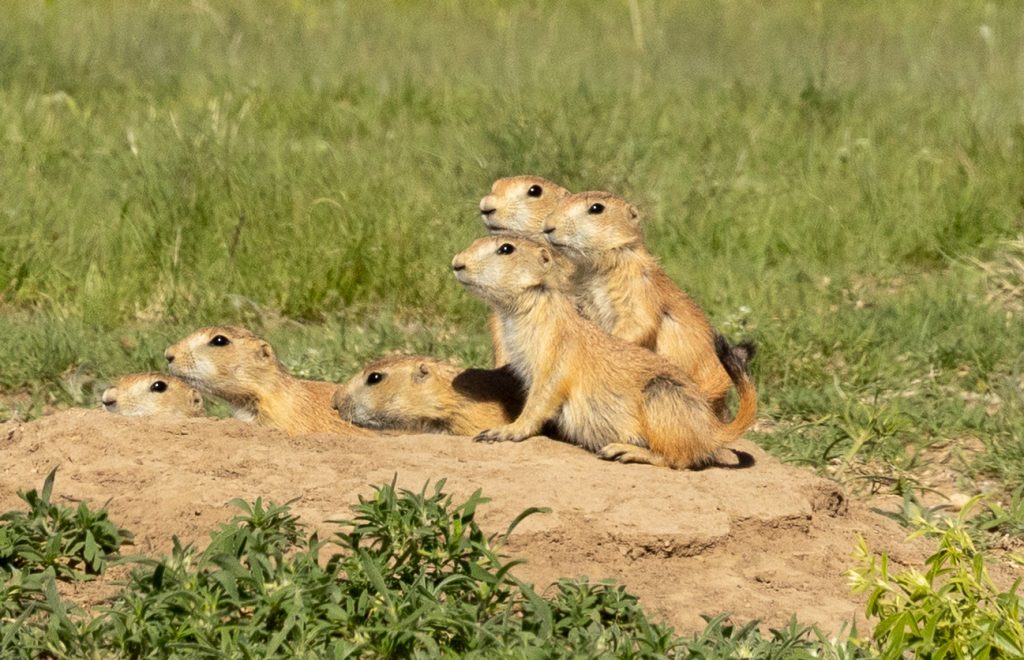
Black-tailed Prairie Dog (Cynomys ludovicianus)
We stayed in Dalhart. A small town heavy with the scent of cow dung.
The national grasslands are half an hour out of Dalhart. They comprise a mosaic of prairie patches that haven’t been agriculturally ‘improved’. The weather was perfect and over two nights we recorded 10 species. We had planned to go out with spotlights and thermal scopes on our second night but a flat tire put a stop to that. Had we gone out the area looked particularly good for American Badger given how much evidence we saw of them. Though this was no longer a priority for Bob. Before we met he mentioned how he would love to see a Badger and have never seen one during his many many years in Texas. But as he set off from San Angelo to meet me he saw one alongside the highway just 30 minutes from his home! My lucky hat appears to be able to transfer its powers, within state lines at least.
Hall’s Pocket Gopher
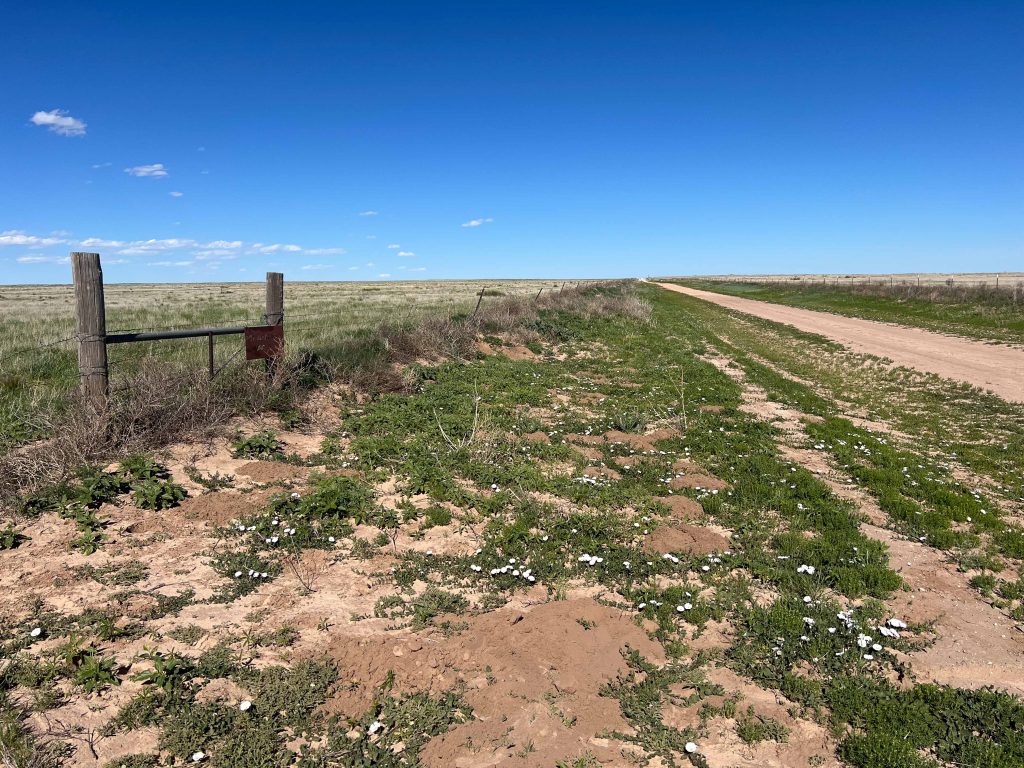
Hall’s Pocket Gopher (Geomys jugossicularis) mounds
Our first task was to find fresh gopher activity. The most recent records that Bob knew of were almost a decade old but we were optimistic that the gophers would still be around. Sure enough there were plenty of of gopher diggings, particularly around the Thompson’s Grove Campsite in the middle of the grasslands. We were a little concerned that some of the mounds might belong to Yellow-faced Pocket Gophers, whose range overlaps Hall’s. But once we started exploring the burrows and setting traps Bob’s expert eye assessed the tunnels were too small for the larger Yellow-faced species.
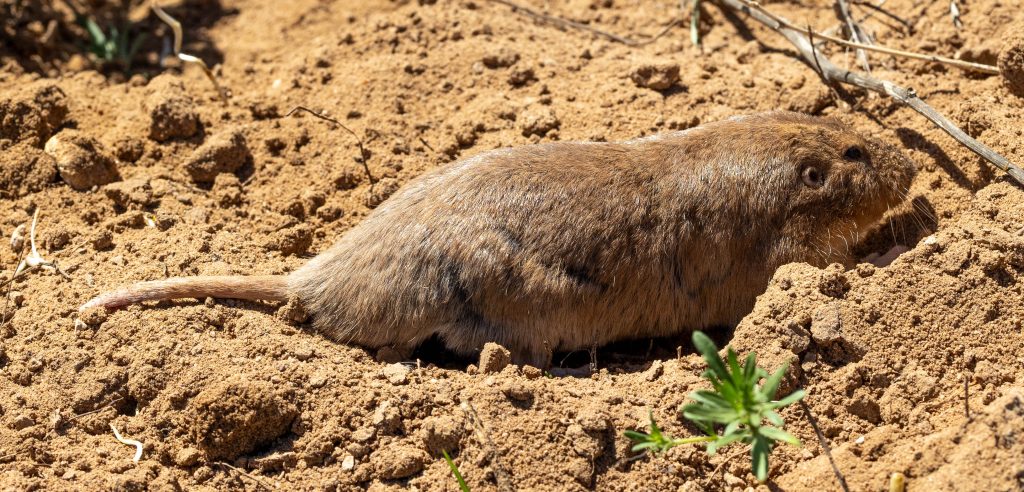
Hall’s Pocket Gopher (Geomys jugossicularis)
It usually takes Bob about three hours to catch a gopher. These were much trickier to capture and it took us a whole day before we caught one and then a second animal. Perhaps this is because the soil here is particularly soft and sandy and it would require very little effort for an animal to dig a brand new tunnel should it come across anything remotely suspicious. Or perhaps the mammals of the Texas Panhandle are just generally more suspicious of strangers. Either way we saw two and I was able to get this month’s fossorial mammal fix.
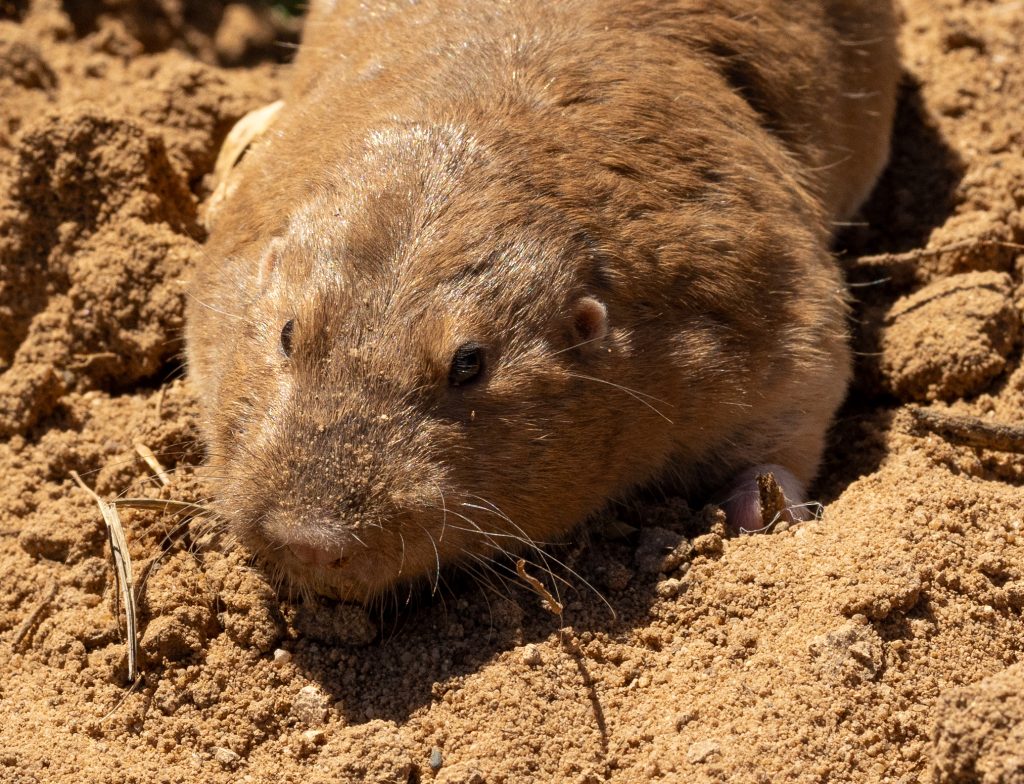
Hall’s Pocket Gopher (Geomys jugossicularis)
Other Mammals
On the drive between Dalhart and the national grasslands we saw a handful of Pronghorn as well a couple of Spotted Ground Squirrels dashing across the road.
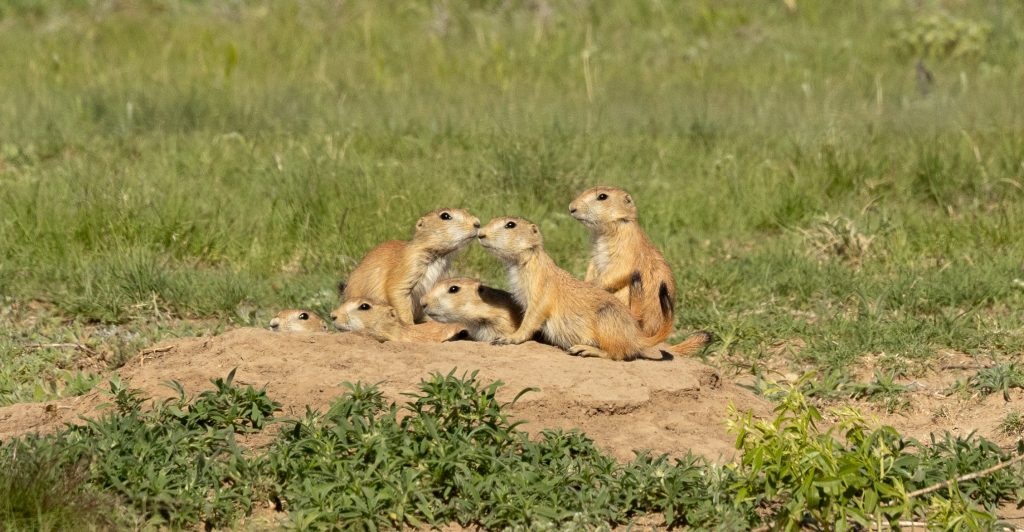
Black-tailed Prairie Dog (Cynomys ludovicianus)
Black-tailed Prairie Dogs were common.
We saw just one cottontail, presumably Desert Cottontail given the habitat.
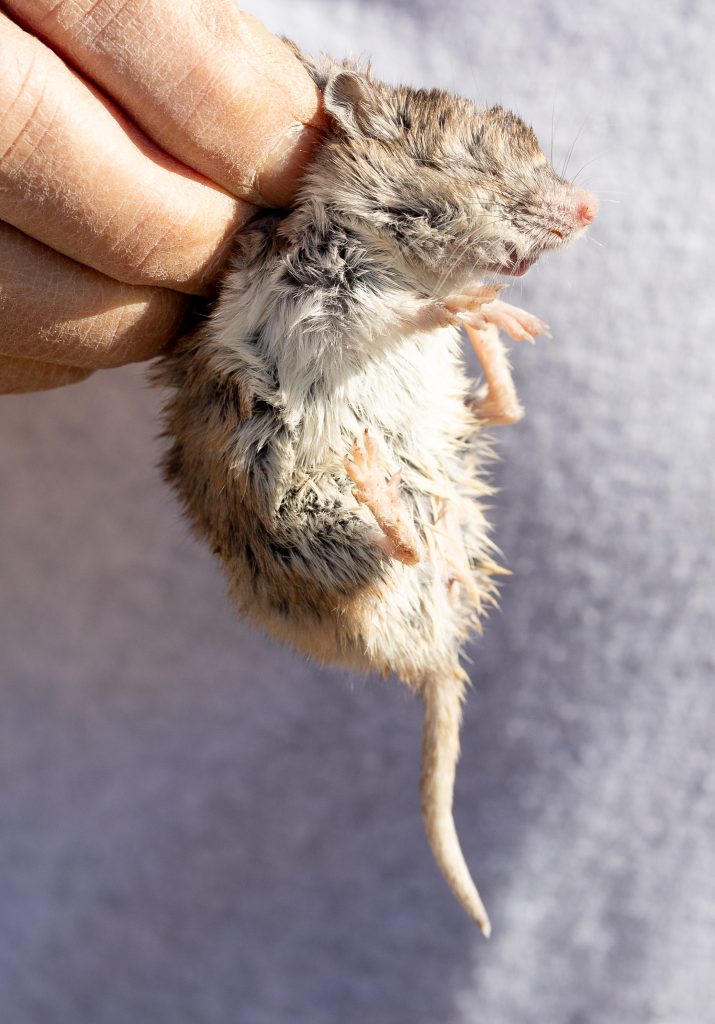
Northern Grasshopper Mouse (Onychomys leucogaster)
The small mammal trapping was reasonable productive, at least in terms of diversity if not numbers of captures.
Over 200 trap nights we caught two Northern Grasshopper Mice and several Ord’s Kangaroo Rats.
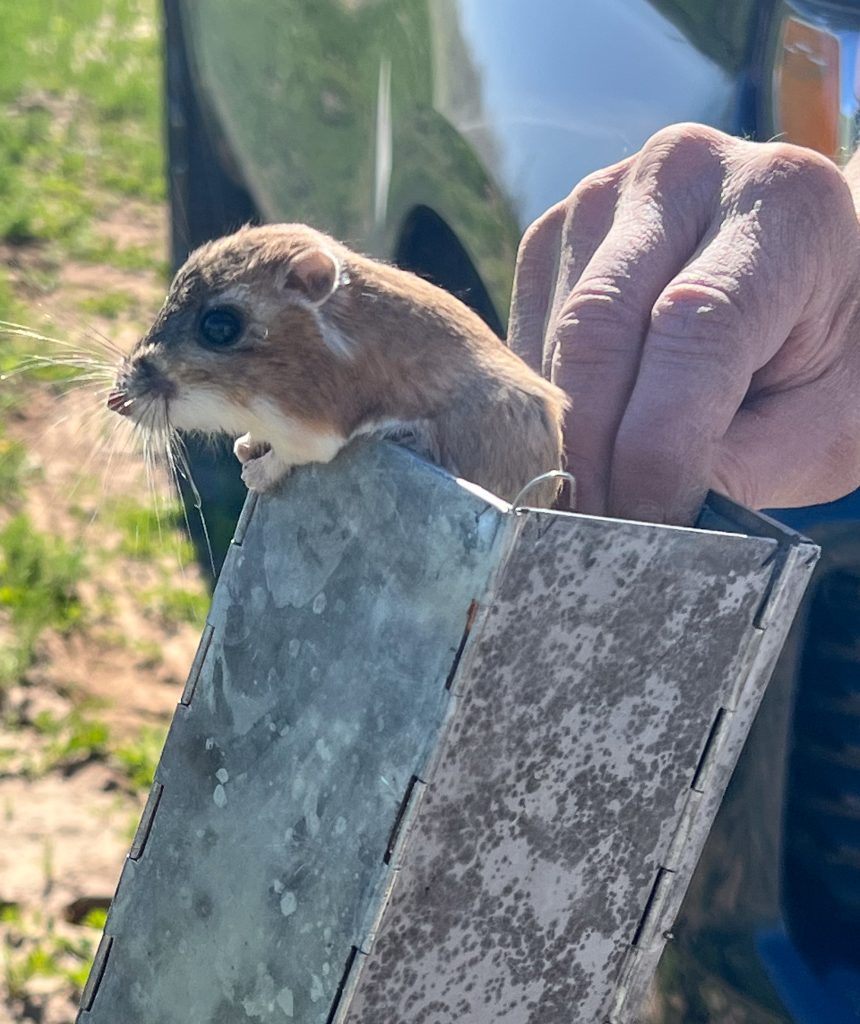
Ord’s Kangaroo Rat (Dipodomys ordii)
If you have looked at kangaroo rats you might have tried to count the toes on their hind feet to decide which species they are. Ord’s Kangaroo Rats have 5 toes but that fifth stubby little toe is not easy to see.
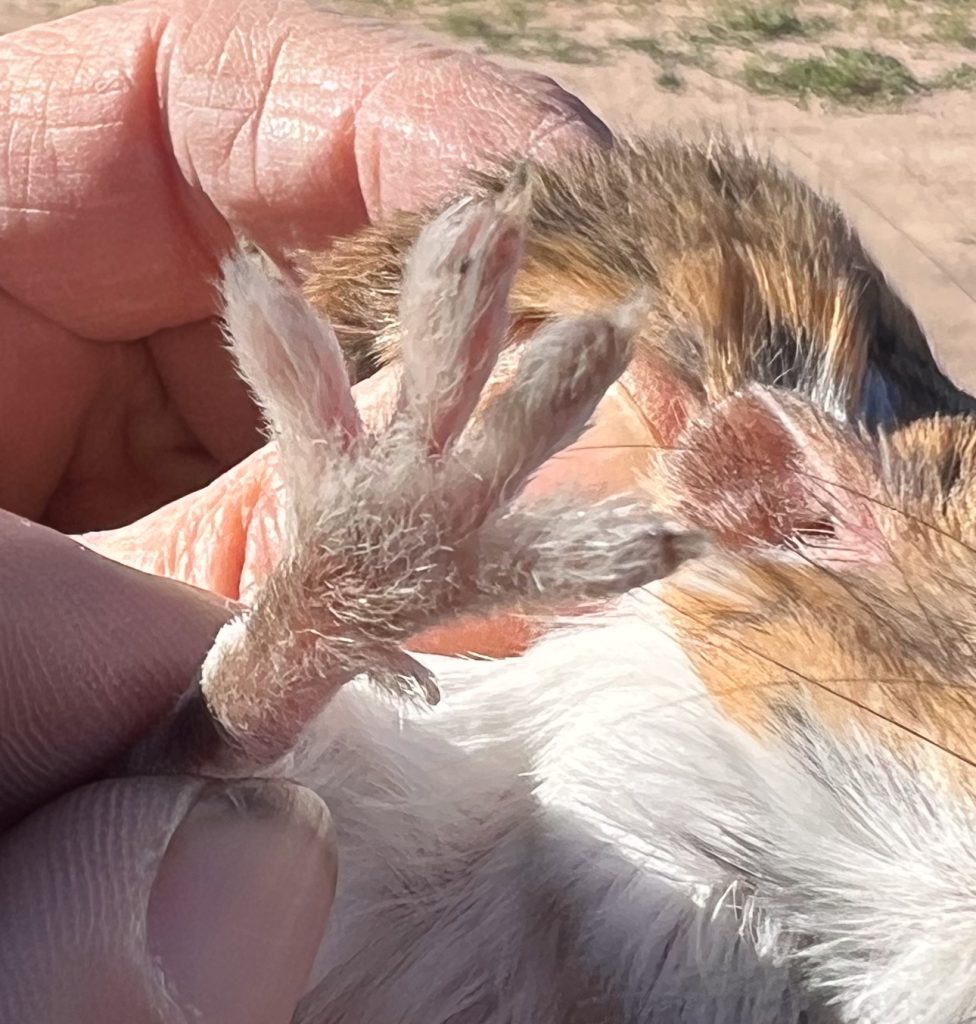
Ord’s Kangaroo Rat (Dipodomys ordii). Note the fifth tiny toe.
We also caught both two Plains and one Western Harvest Mouse. The former is smaller than the latter and has a clealry bicoloured tailed with a black dorsal stripe.
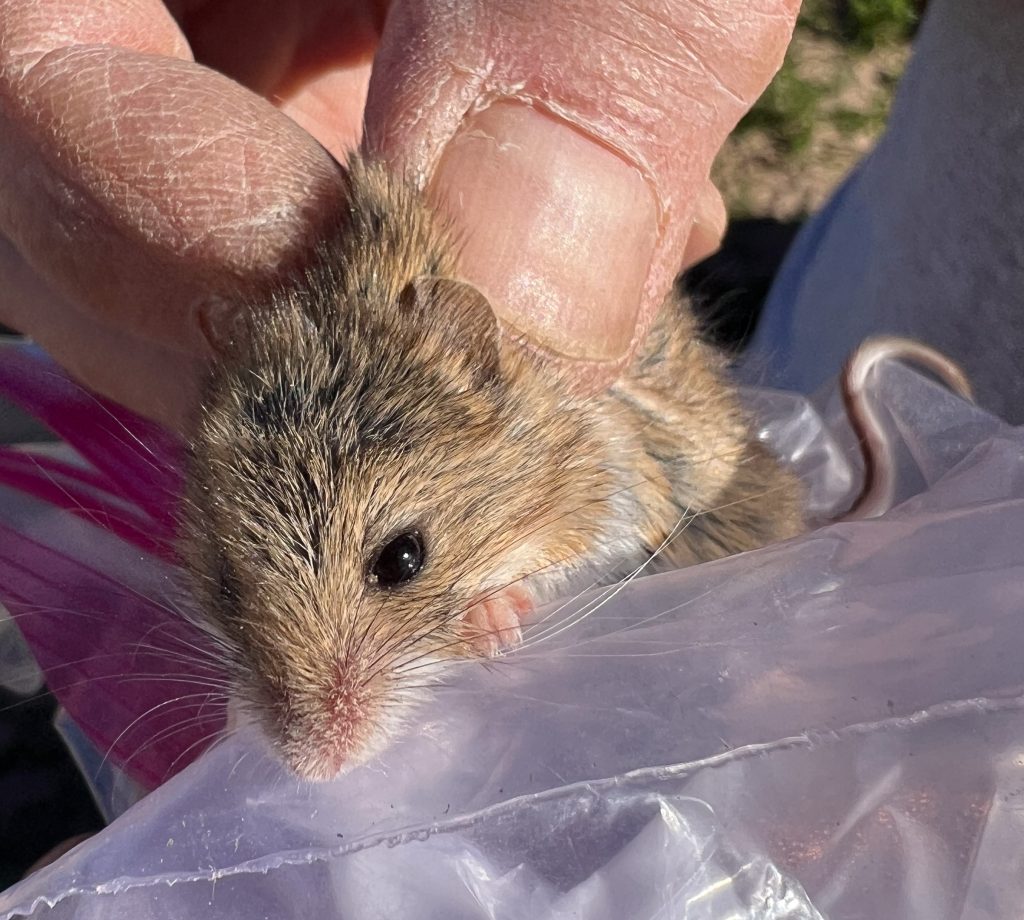
Plains Harvest Mouse (Reithrodontomys.montanus)
Compare that with the tail of the Western Harvest Mouse below, which has a less distinct brownish ventral stripe.
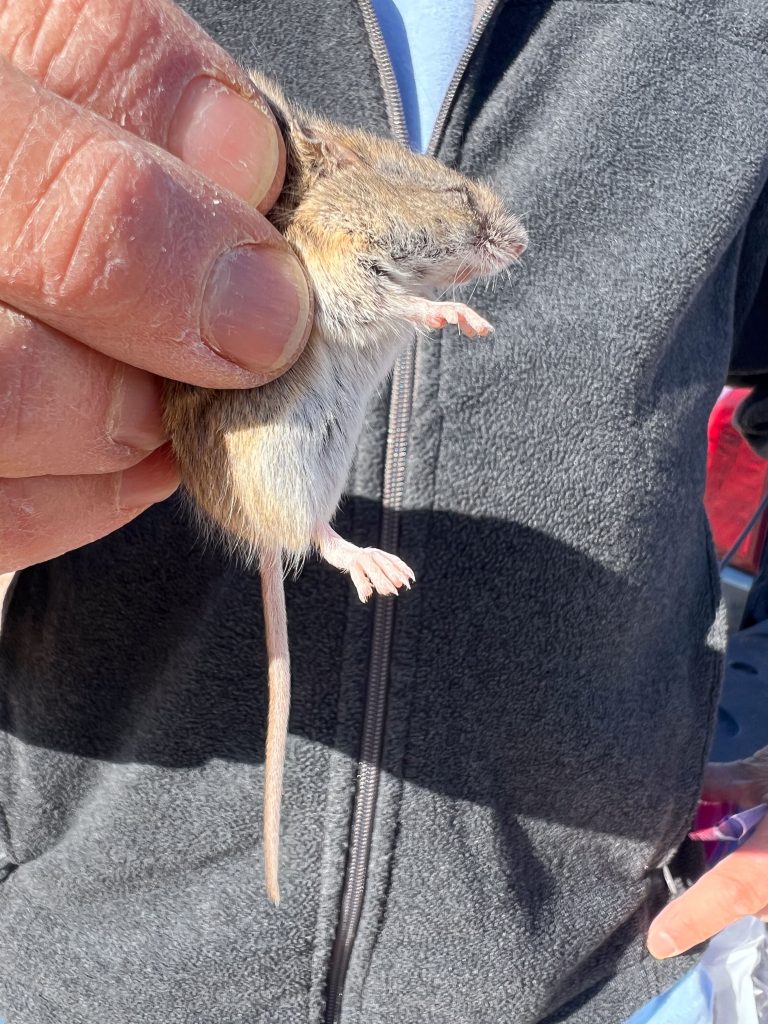
Western Harvest Mouse (Reithrodontomys megalotis)
I was surprised that we caught just one deer mouse: a Western Deermouse.
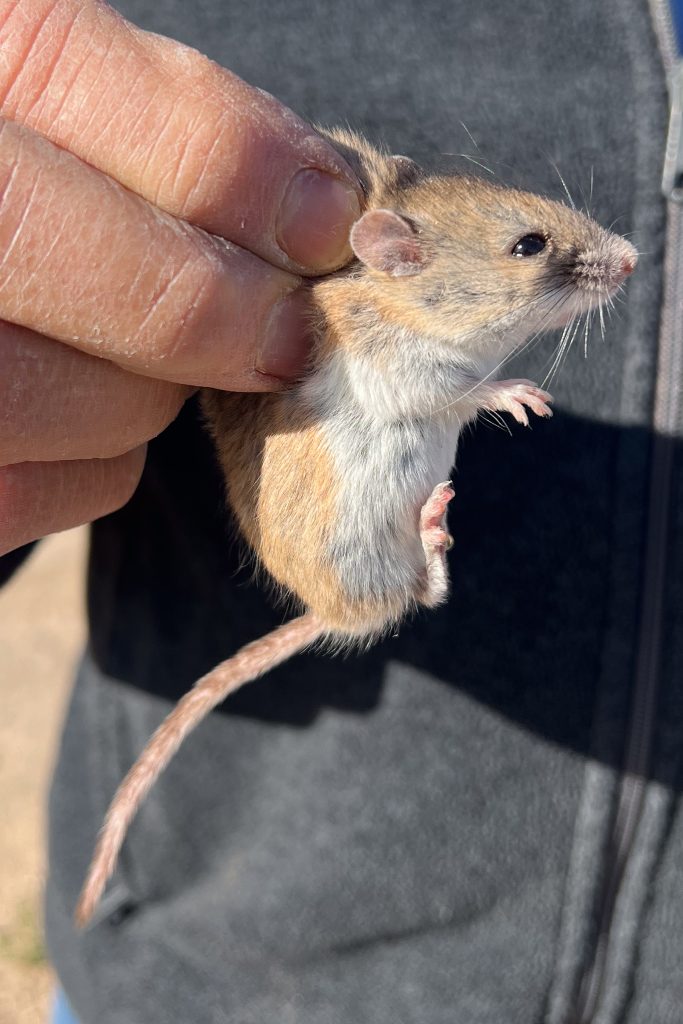
Western Harvest Mouse (Reithrodontomys megalotis)
As always a very big thanks to Bob for indulging me in my quest to tick off another mammal and being such great company. There is not a lot left new for me to see in Texas now but I imagine I will see return to see those leftovers with Bob before too long.
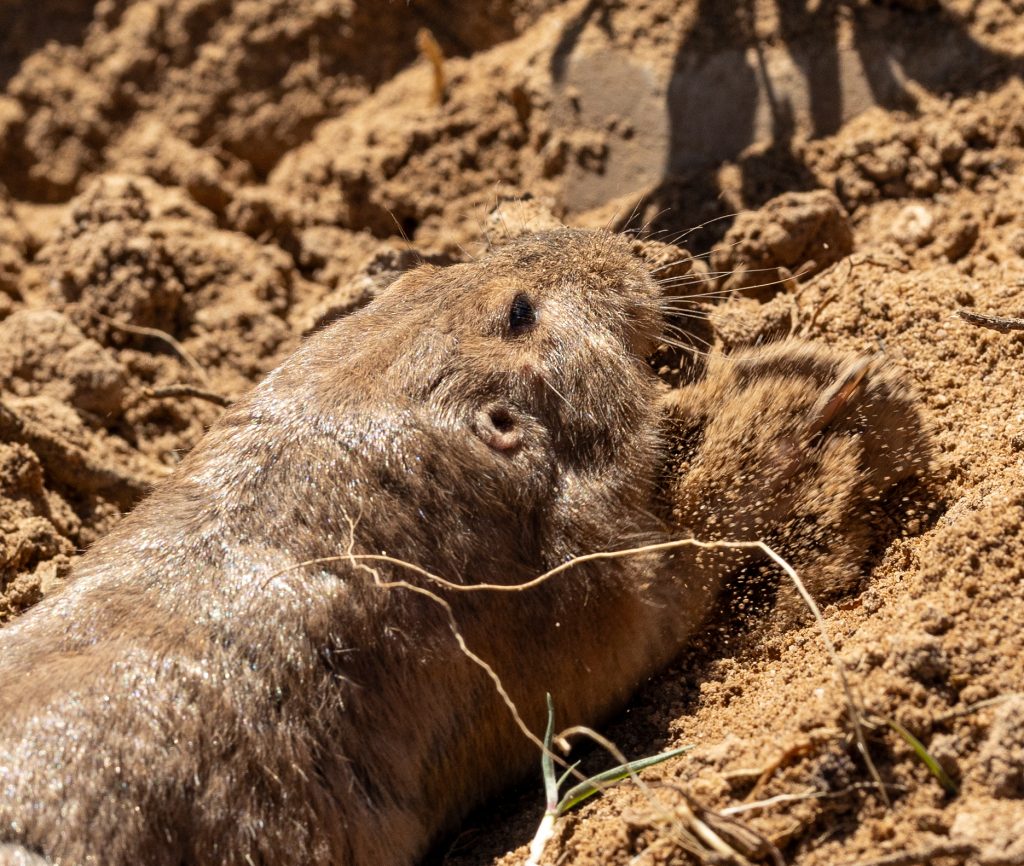
Hall’s Pocket Gopher (Geomys jugossicularis)
Trip List
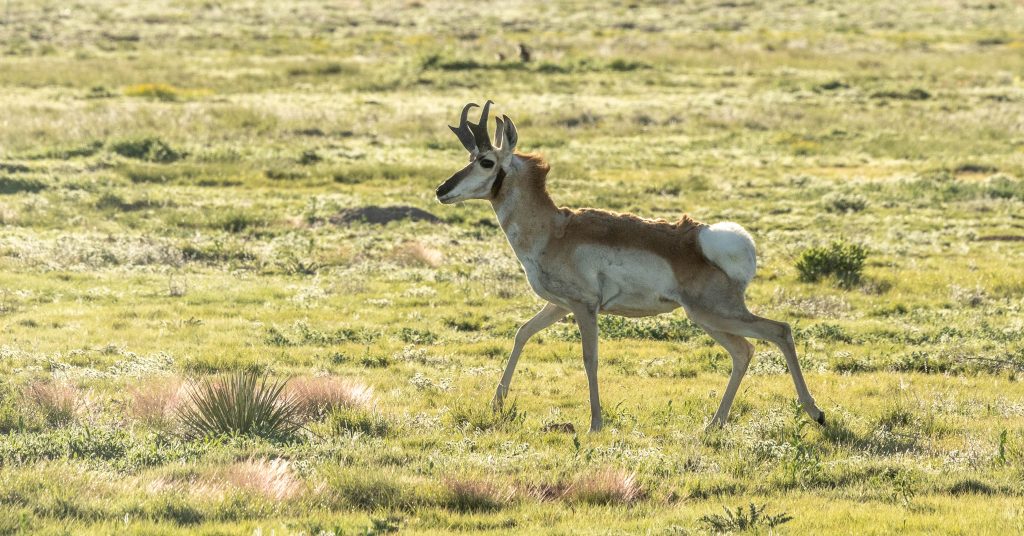
Pronghorn (Antilocapra americana)
Desert Cottontail (Sylvilagus audubonii)
Black-tailed Prairie Dog (Cynomys ludovicianus)
Spotted Ground Squirrel (Xerospermophilus spilosoma)
Hall’s Pocket Gopher (Geomys jugossicularis)
Ord’s Kangaroo Rat (Dipodomys ordii)
Northern Grasshopper Mouse (Onychomys leucogaster)
Western Deermouse (Peromyscus sonoriensis)
Western Harvest Mouse (Reithrodontomys megalotis)
Plains Harvest Mouse (Reithrodontomys.montanus)
Pronghorn (Antilocapra americana)
10 species and 1 lifer.
Post author

Leave a Reply
You must be logged in to post a comment.